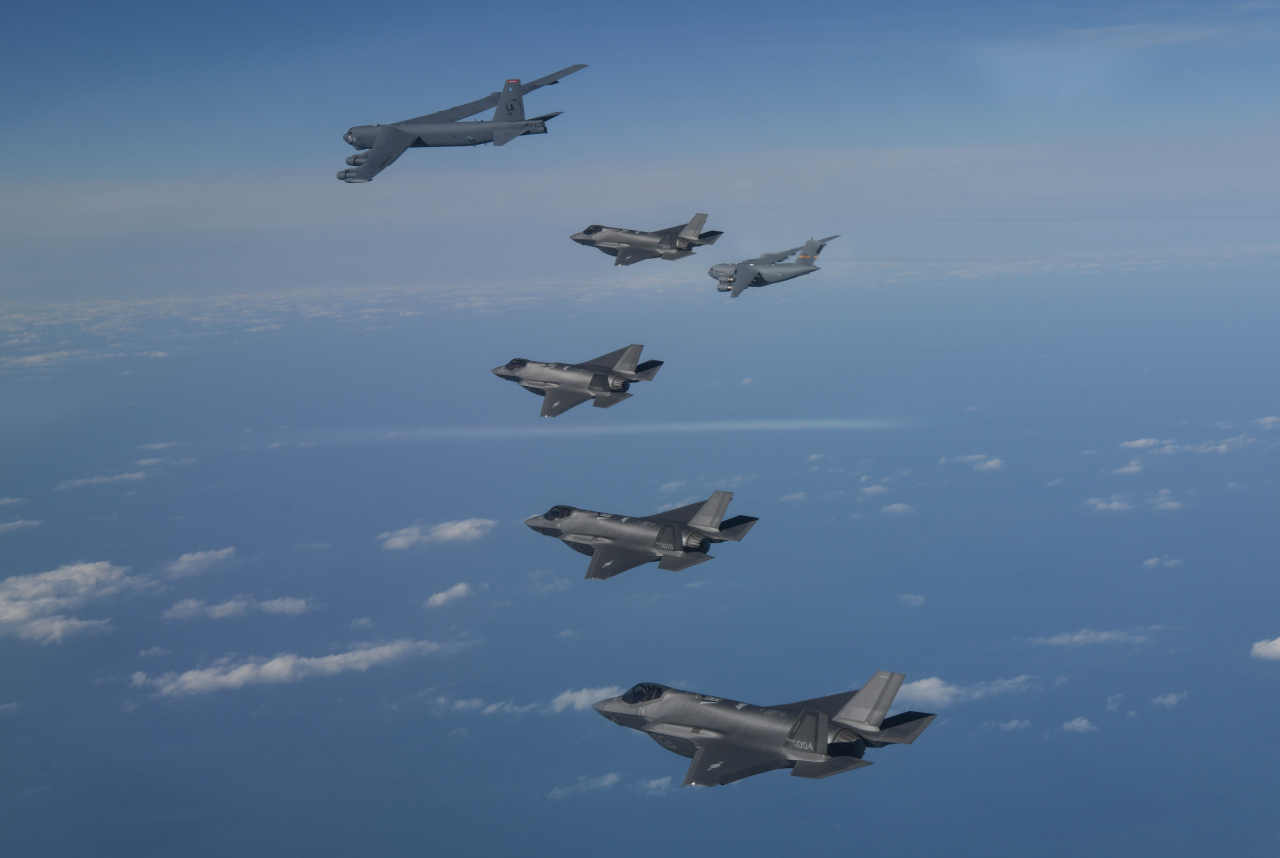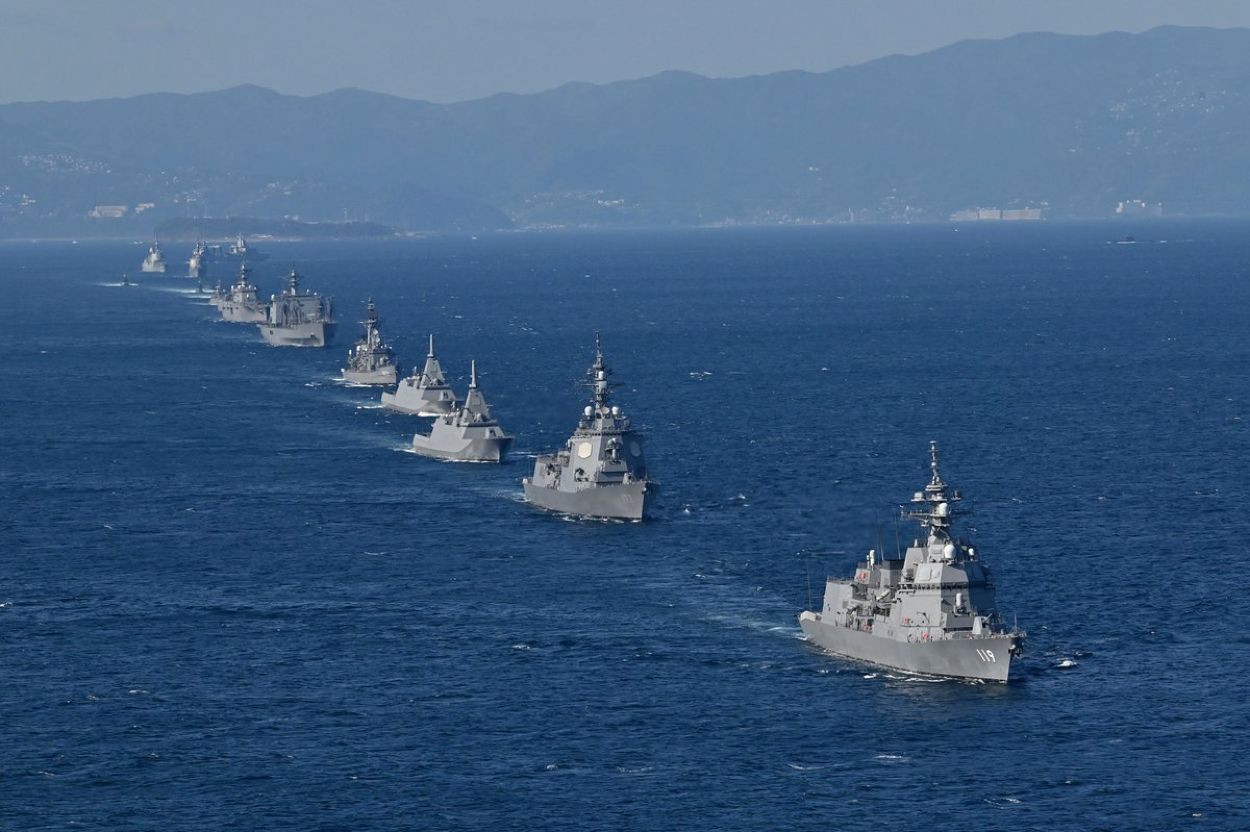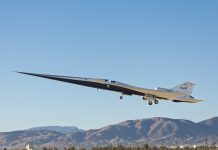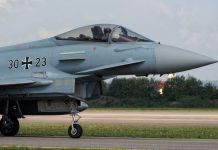The US military has been staging more and more drills with its allies in the Indo-Pacific to step up its preparedness in the region and bolster its security ties amid regional tensions.
In recent months, the US has undertaken joint military drills with almost all of the major powers surrounding China, including Japan, India, South Korea, and Taiwan, etc., which according to experts, in part, is also aimed at sending a warning to China and deterring North Korea.
Military Drills With South Korea
On December 20, 2022, the US and South Korea conducted combined air drills involving US B-52H strategic bombers and F-22 stealth fighters and South Korea’s F-35A stealth jets and F-15K fighters. The joint air drills marked the first visit by the F-22 stealth fighters to South Korea since May 2018.
The air drills were held just two days after North Korea claimed to have conducted tests in preparation for the launch of a military reconnaissance satellite, possibly early this year.

North Korea conducted its highest number of missile tests in 2022, the most in a single year since Kim Jong-un took power in 2011. Several of these missiles were intercontinental ballistic missiles believed to be capable of reaching the US. Experts suggest Pyongyang might conduct its seventh nuclear test in 2023.
Amid the increasing saber-rattling by North Korea, the US and South Korea have vowed to increase their combat readiness and interoperability.
Between October and November, the two countries held their largest joint military drills in years, the ‘Vigilant Storm operation’ which involved more than 200 warplanes and thousands of members from the ROK Air Force, US Air Force, US Marine Corps, US Navy, and US Army.
The Republic of Korea ?? F-35As in a combined training flight over the Korean Peninsula as part of Vigilant Storm ?️ 23.
Vigilant Storm is a recurring training exercise demonstrating bilateral nations' interoperability and showcasing deterrent capabilities. pic.twitter.com/nxJswdGlxJ
— F-35 Lightning II Joint Program Office (@theF35JPO) November 15, 2022
The US sent its nuclear-powered aircraft carrier, the USS Ronald Reagan, for the exercise alongside South Korea, which staged mock attacks on enemy forces and even included a joint river-crossing drill, which according to reports, replicated a large-scale operation to counter threats from North Korea.
In addition, Seoul has announced a plan to hold more than 20 large-scale joint military drills with the US in 2023, including the first large-scale combined live-fire exercise in six years.
Increased Security Assistance For Taiwan
In September 2022, the US State Department approved a $1.1 billion arms package for Taiwan, following weeks of increasing tension with China in the Taiwan Strait in the aftermath of the visit by US House Speaker Nancy Pelosi to the island nation in August 2022.
The arms package included logistics support for Taiwan’s Surveillance Radar Program, 60 Harpoon anti-ship missiles manufactured by Boeing, and 100 Sidewinder tactical air missiles built by Raytheon.

In response to this arms package, the Chinese embassy threatened “countermeasures” and said that the arms package severely jeopardized US-China relations.
In December, US President Joe Biden signed the National Defense Authorization Act, which allocated as much as $10 billion worth of security assistance to Taiwan in the next five years, providing an additional route for transferring weaponry outside direct military sales to Taiwan.
The legislation also provides the President the authority to draw down the existing stock of the US military to transfer weapons to Taiwan in the event of a Chinese attack or other acts of aggression – similar to what the Biden administration is doing for Ukraine.
In response to the US National Defense Authorisation Act, the Chinese foreign ministry said that China would “take strong and resolute measures to safeguard its sovereignty, security, and development interests firmly.”
Bolstering Taiwan’s defenses has become an urgent priority for the US. Pentagon officials have warned that China’s military is working toward acquiring capabilities that will allow the country to attack or invade Taiwan by 2027.
During the Communist Party’s national congress in October 2022, Chinese President Xi Jinping vowed to achieve “peaceful reunification” with Taiwan without ruling out the use of force if necessary.

In a recent interview, the Director of the US Central Intelligence Agency (CIA), Bill Burns, said that Chinese President Xi Jinping had ordered his military leadership to be prepared to launch a war by 2027.
“He’s (Xi Jinping) insisted publicly that his preference is to do that by means short of the use of force. But we know that he’s also instructed his military leadership to be ready by 2027 to launch a war,” said Burns.
An attack on Taiwan can potentially alter the security and economy of the Indo-Pacific region, giving China a larger scope to control vital sea lanes, bully US allies and force the US military out of the area.
US Welcomes Revision Of Japan’s National Defense Strategy
In November 2022, the US military and the Japanese Self-Defense Forces conducted their joint biennial ‘Keen Sword’ drills in Japan’s southwestern islands, including Tokunoshima, Amami, and Tsutarajima, as Japan has been bolstering its defense capability in the region amid intensifying tensions with China.
The exercise involved 26,000 Japanese and 10,000 American troops, 30 vessels, and 370 aircraft from both nations. According to the Japanese Defense Ministry, Australia, Britain, and Canada joined parts of the drills.
Reports suggested the drills were also aimed at deterring Chinese military adventurism in the East China Sea, where the disputed Senkaku islands are located, controlled by Japan, and claimed by China and Taiwan.

Also, in December 2022, Japan revised its National Defense Strategy, adding plans to acquire counter-strike capabilities and increase its military spending to two percent of gross domestic product by 2027. It also characterized China as an “unprecedented strategic challenge” to Japan’s security.
The US hailed the revision and said it reshaped the ability of the US-Japan alliance to promote peace and protect the rules-based order in the Indo-Pacific region and around the world.
‘Yudh Abhyas’ With India
The US and India also conducted the 18th edition of their joint military exercise, ‘Yudh Abhyas,’ in Uttarakhand, about 100 kilometers from the Line of Actual Control (LAC), the de facto border between India and China.
According to the Indian Ministry of Defense, the exercises focussed on surveillance, mountain-warfare skills, casualty evacuation, and combat medical aid in adverse terrain and climatic conditions.

The Chinese foreign ministry said the joint Indo-US exercises “violated the spirit of relevant agreements” between Beijing and New Delhi. “It does not serve the mutual trust between China and India. China has expressed concerns to the Indian side over the military exercise.”
In response to China’s comments, the Indian foreign ministry said, “India exercises with whomsoever it chooses to, and it does not give a veto to third countries on this issue.”
China’s state-owned Global Times described the joint exercises as part of Washington’s measures to “strengthen military cooperation with India to embolden India to provoke China more aggressively.”
Shortly after these drills, a sizeable number of Chinese People’s Liberation Army (PLA) troops tried to breach the LAC in the Yangtse area of the Tawang sector in India’s north-eastern state of Arunachal Pradesh, which resulted in a skirmish between the Indian and Chinese forces, with both sides sustaining injuries.
The skirmish is considered the worst since the summer of 2020, when deadly fighting between the Chinese and Indian troops in the Galway Valley resulted in the death of 20 Indian soldiers and around 40-50 Chinese soldiers, according to a report by Australian newspaper ‘The Klaxon.’
- Contact the author at tanmaykadam700@gmail.com
- Follow EurAsian Times on Google News




